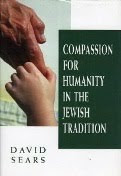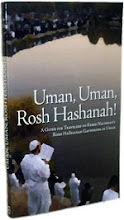A Chassidic
Ecology Lesson
In everything,
even in the minutest circumstance which we created beings reckon as nothing and
do not take at all into account, there is a divine intention, a divine will;
and divine providence arranges the circumstances that will enable this
intention to be realized in a certain way.
One day in the
summer of 5656 (1896 c.e.) I was strolling with my father (Rabbi Sholom Dov
Ber, the fifth Lubavitcher Rebbe, 1860-1920) in a field in the country resort
of Bolivke, near Lubavitch. The crops were almost ripe, and the grain and the
grass were nodding in a gentle breeze.”Behold Godliness!” said my father. “Each
movement of every single sheaf of grain and blade of grass was included in the
Primal Thought of the partzuf of Adam Kadmon (Primordial Reality)—in Him Who
watches and gazes until the end of all the generations; and divine providence
brings this thought to realization for the sake of a certain divine intention.”
As we walked on,
we found ourselves in a forest. Deep in contemplation of what I had just been
told concerning divine providence, and overwhelmed by the tenderness and the
earnestness of my father’s explanation, I plucked a leaf from a tree as I
passed by and held it in my hand. As people often do and without taking
particular notice, I tore off little pieces from the leaf every so often as I
walked on, ensconced in thought, and tossed them to the ground.
My father now
said, “The Ari says that not only is every leaf of a tree a creature with
divine vitality, which the Almighty created with a certain end as part of the
ultimate purpose of creation; but, moreover, every leaf contains the spark of a
soul that descends to this world for the sake of a tikkun, in order to
attain restitution.
“Just see how ‘man
is always liable for damages, whether awake or asleep’ (Bava Kamma 26a).
The difference between being awake or asleep is to be found in the inward
faculties of seichel and middos, in the person’s intellect and in
his emotional attributes. The external faculties are to be found in a sleeping
person, too; only his inward faculties are confused—which explains the presence
of the paradoxes to be found in dreams. And where does the difference between
one who is awake and one who is asleep become apparent? In the faculty of
vision. One who is asleep does not see; one who is awake can see.
“When a person
is awake, he sees Godliness; when he is asleep, he does not. But ‘man is liable
for damages whether he is awake or asleep.’ Just now we discussed the subject
of divine providence—and quite without thinking, you plucked a leaf, held it in
your hand, played around with it, turned it around, squashed it, tore it up in
little pieces and scattered it in different places. How can a person be so
light-minded in relation to a creature of the Almighty? This leaf is something
created by the Almighty for a particular reason. It has a God-given vitality;
it has a body, and it has life. In what way is the leaf’s ‘I’ smaller than your ‘I’?
“True, the
difference is a big one. The leaf is tzomei’ach (vegetation) and you are medaber (a human being, endowed with the power of
speech), and there is a great difference between the two categories.
Nevertheless, one must always remember the mission and the divine intention of
every created thing—what is the task that the tzomei’ach has to fulfill
in this world, and what is the task that the medaber has to fulfill in
this world” (Rabbi Yosef Yitzchak Schneersohn of Lubavitch, Likkutei Dibburim I, 4a: 4 [Brooklyn,
NY: Kehot, 1987], trans. Rabbi Uri Kaploun).
A Walk With
Rav Kook
Rabbi Aryeh
Levin of Jerusalem (1885-1969) recounts a similar experience. As a young Talmud
scholar, Reb Aryeh left his native Lithuania in 1905 and came to the city of
Jaffa in the land of Israel. He sought out his future mentor, Rav Avraham
Yitzchak Kook, who received him with great warmth. Once, while they were
walking together in the fields engaged in Torah discussion, Rabbi Levin picked
a flower. At this Rav Kook remarked, “All my days I have been careful never to
pluck a blade of grass or a flower needlessly, when it had the ability to grow
or blossom. You know the teaching of our sages that not a single blade of grass
grows here on earth that does not have an angel above it, commanding it to
grow. Every sprout and leaf of grass says something meaningful, every stone whispers
some hidden message in the silence, every creation utters its song!”
Rabbi Levin
concludes, “These words of our great master, spoken from a pure and holy heart,
engraved themselves deeply in my heart. From that time on, I began to feel a
strong sense of compassion for all things” (based on Simcha Raz, A Tzaddik In Our Time [Jerusalem:
Feldheim, 1976] pp. 108-109).[1]
[1] An almost identical story is told about Rabbi Shraga Feivel Mendlowitz (1886-1948)
and one of his students. “Don’t you know,”
he asked the youth, “that the whole creation sings a song to the Creator—every
plant, every blade of grass? When you
pulled that leaf off the tree, you cut off its song in the middle” (Yonoson
Rosenblum, Reb Shraga Feivel [Brooklyn, NY: Artscroll / Mesorah, 2001]
p. 232).

















